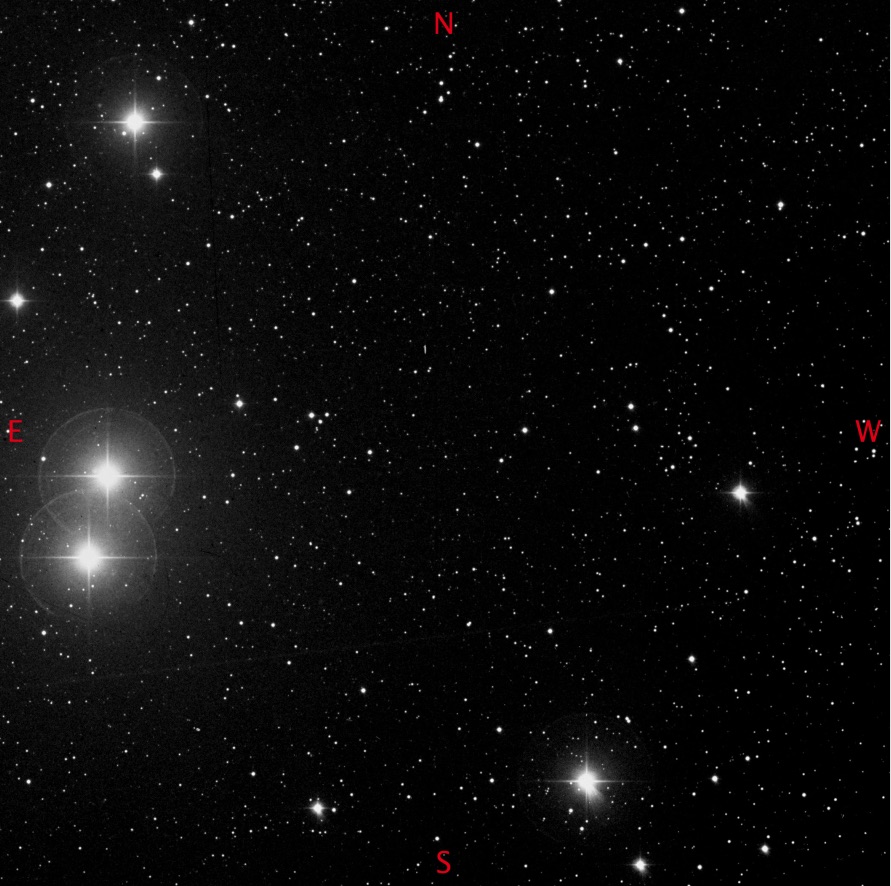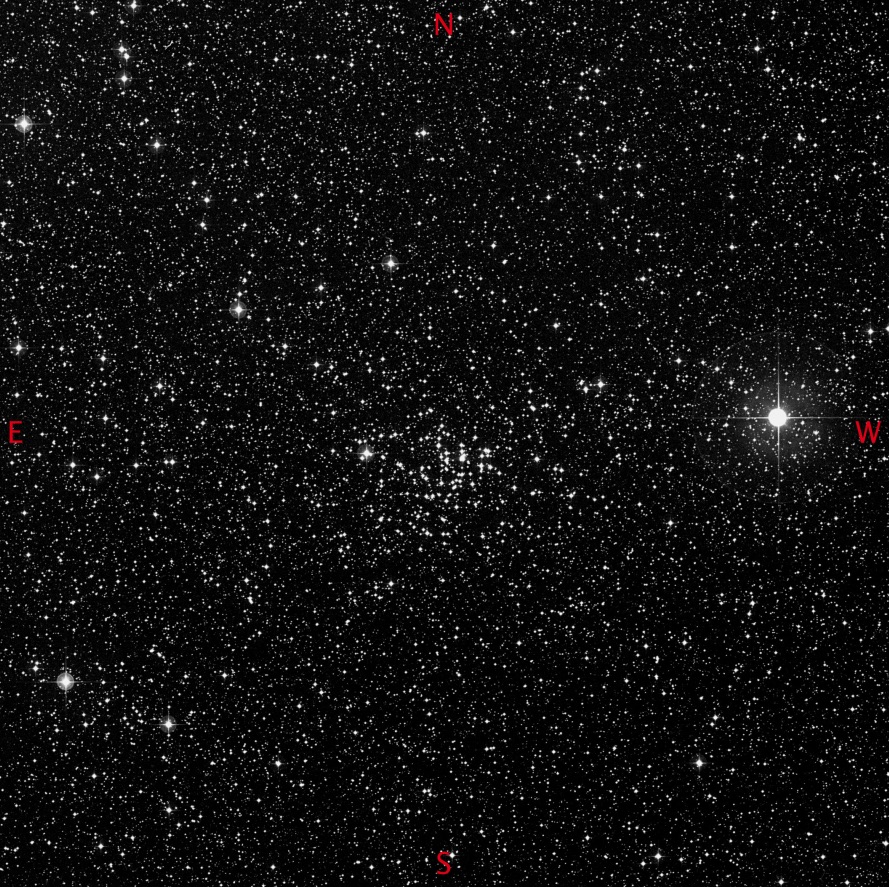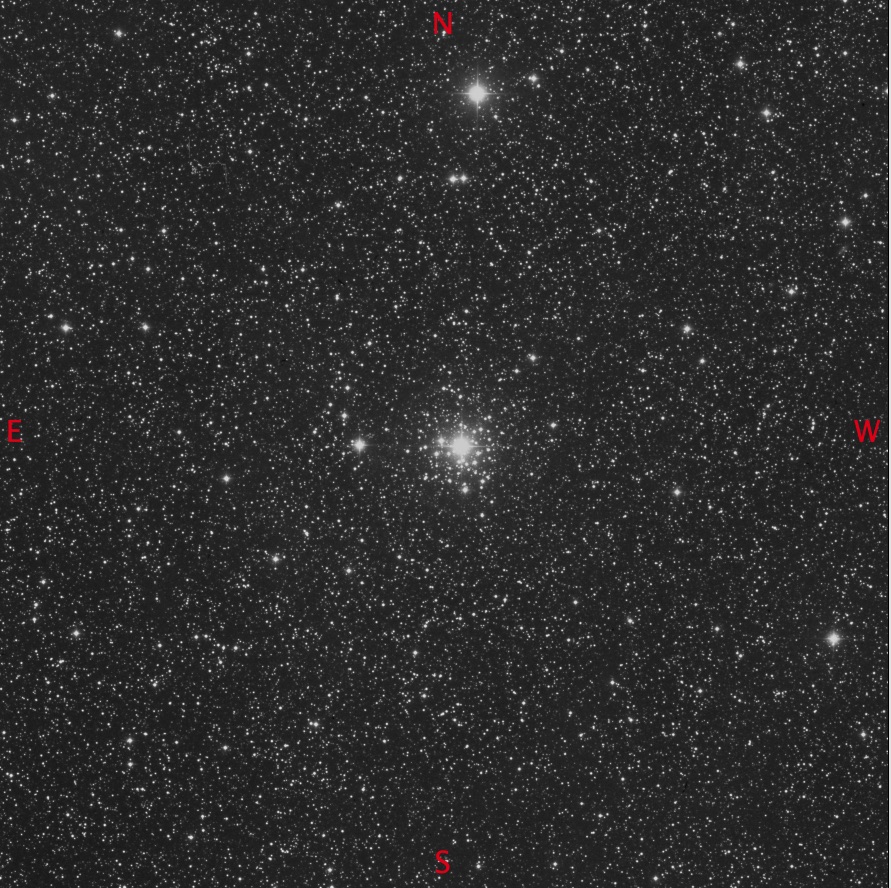Two clear nights in three days – Wow.
The ‘Scope Nights’ weather app had been showing excellent viewing conditions for this evening/morning for a few days, so I was able to plan what objects I wanted to observe for this session in advance. The 51% illuminated Moon was up at an altitude of 33 degrees at the start , but became less of a problem as it set towards the latter part of the session.
Session Data
- Date: 28/12/2014
- Time: 20:30 – 03:30 UT
- Seeing: I Perfectly Stable,
- Transparency: III Mostly Clear,
- Temp:1.5c,
- Air Pressure: 1017mb,
- Humidity: 80%,
- Dew Point: 1.0c,
- Wind Speed: 1.6mph,
- VLM at Zenith: 5.4mag
C41, Melotte 25

In the 10x60mm Finder, 23mm Reticule, 10 X, 5.1° West is to the 4 O’Clock
The FOV contains about 10 bright stars of 3.7 to 5.0 mag With Aldeberan just at the edge of the FOV at the East. With just five of those bright stars contained within a 50 arc/min circle, this cluster is too large to be viewed by anything other than binoculars.
C39, NGC2392

In the Altair Astro 250mm, 10mm Delos, 203 X, 21.3′, West is to the 1 O’Clock.
The PN has a diameter of about a 1/4 of the distance between it and the 7.3mag star, which is 1.5 arc/min to the North. The POSS image shows the PN to have three distinct structures. A central star core surrounded with an oval ring of nebulosity and an outer ring of nebulosity. However all I could make out was a uniformly glowing object with a bright stellar core.
I keep forgetting I have that 4mm TMB eyepiece in the box, as this might have allowed for these different structures be be made out.
C7, NGC2403

In the Altair Astro 250mm, 40mm Plossl, 51 X, 52′, West is to the 11 O’Clock
I was confused with the orientation of this, as Astroplanner shows the long axis of this galaxy running E/W rather than NW/SE. However it was not possible to say which was the longer axis without an extended period of using averted vision and even then, that was an uncertain conclusion.
Changing to the Altair Astro 250mm, 14mm Delos, 145 X, 29.8′, it was possible to confirm the longer axis running NW/SE but the galaxy looks just off round rather than a definite oval shape as shown in POSS image. Despite the higher magnification, the most pleasing view was through the 40mm.
C58, NGC2360

In the Altair Astro 250mm, 40mm Plossl, 51 X, 52′, West is to the 10 O’Clock.
The brightest star in the FOV is just off to the edge in the West and shines at 5.5mag. From this star, there is an arc of stars than form a chain than curves to the NW before heading to a bright cluster at the centre of the FOV. This line extends through that and continues towards the SSE. The cluster has another line of stars leading off to the NE. These three lines of stars where they make contact with the cluster, make the cluster take on a triangular oval shape.
Changing to the TMB 80 f/6, 26mm Plossl, 18 X, 2.8°, the cluster and those three threads of stars stands out better from the background star field, although you do need to use averted vision every now and again to refresh and brighten the view. The cluster looks like a three sided ‘Mermaids Purse.
In a way, the TMB view was more satisfying even though it was harder to make out…..Odd
Although this object was being viewed as part of my Caldwell observations, I note that this crosses off one of the few remaining Caroline Herschel objects still outstanding.
C64, NGC2362

In the Altair Astro 250mm, 40mm Plossl, 51 X, 52′, West is the 10 O’Clock
The cluster is easily seen against the background and the brighter stars form a perfect triangle with the point towards the NW.
In the centre of this triangular grouping is the bright star 30 CMa at 4.4 which seems to cast a glow creating a nebulous effect – which it isn’t of course. Just at the edge of the FOV is the 5.0mag star 5 CMa
Changing to the Altair Astro 250mm, 14mm Delos, 145 X, 29.8′, The triangular shape is even more marked and looks pretty much symmetrical. The base of the triangle is made up with a line of about 10 stars of similar brightness.
C23, NGC891
Not Found
C25, NGC2419

In the Altair Astro 250mm, 10mm Delos, 203 X, 21.3′ West is to the 7 OClock.
I had an attempt as this earlier in the Month and couldn’t really pinpoint it. However with AV3 it was visible more than 50% of the time. Size was difficult to make out, but I would estimate it covered about a 1/4 of the distance between the two bright 7.0 and 7.8 mag pointer stars in the FOV. This works out at about 1 arc/min.
While it looked like a normal globular cluster, the object had no bright core and looked uniformly bright.
C3, NGC2419

I did attempt this object back in June, but didn’t see anything of it then.
In the Altair Astro 250mm, 40mm Plossl, 51 X, 52′, West is to the 1 O’Clock.
There are three stars on the NE quadrant that form a very flat ‘V’ shape. Going S/W from the most Southerly of these stars takes you to the core of this very flat, edge on galaxy. All I can see is a haze. There is no visible core and I cannot make out any orientation or structure of this galaxy.
C5, IC342

I didn’t see this object earlier in the session, but I attempted it again once the Moon had set and conditions were much more favourable.
In the Altair Astro 250mm, 40mm Plossl, 51 X, 52′, West is to the 6 O’Clock.
These are a line of six stars just off centre to the SW and this run an a SE/NW direction. Just to the NE of this line is the galaxy core. In the POSS image this core looks bright and easily seen, but wasn’t. This object is only ever seen with AV5 averted vision during fleeting moments. I know something is there, but could not say how large it was or anything else of its structure. The hardest object seen ( Detected is probably a more accurate description) this session.